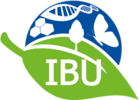Contact
Prof. Dr. Oliver Zielinski
Institute of Chemistry and Biology of the Marine Environmentat (CBM) Phone (OL) +49 (0)441 798 3518 Phone (WHV) +49 (0)4421 944 8174 eMail oliver.zielinski@uol.de
A3
A3: Biochemical, physical, and bio-optical interactive effects on the productivity of the phytobenthos and phytoplankton in nearshore systems

IBR PhD Candidate
| Contact details: | Schleusenstrasse 1, WHV 26382, Germany |
|---|---|
| Telephone: | +49 152 07619083 |
| Email: | joelineezekiel@gmail.com |
Supervisors:
PI: Oliver Zielinski, Co-PIs: Maren Striebel (AG Hillebrand), Michael Kleyer, Vanessa Minden (AG Kleyer)
Research and Projects
Nearshore marine environments constitute highly productive and diverse habitats; especially as they exist at almost all coastal systems and cover immense distances worldwide. At the same time these ecosystems are exposed to multiple human stressors, show distinct alterations in biodiversity and thus, changes in the biodiversity – ecosystem function relationships at different scales. In nearshore systems the complex and dynamic array of aquatic and terrestrial landscape elements creates a considerable temporal and spatial heterogeneity, is exposed to a physical disturbance regime, enables high biodiversity and shapes hydrological and matter retention.
To elucidate the interaction between disturbance, diversity and productivity algal communities benthic can be used as model communities, as these organisms react sensitive and rapidly on changes in flow regime and are closely related to key ecosystem functions.
The identified key parameters of this interaction are phytobenthos communities, the sediments and light with respect to tempo-spatial availability and spectral composition. Bacterial activities, nutrient availability and dissolved gases represent further relevant parameters whose abundance and related processes are assessed in co-operation with other researchers.
This study aims at investigating the biology and optical interactive effects on the productivity of the phytobenthos and phytoplankton in near-shore and coastal systems. This will be achieved by (a) Summarizing the spectra characteristics of phytoplankton communities (as a proxy for biomass, primary production) of interest with regards to the near-shore and coastal ecosystems (b) Characterization of underwater light field with respect to the optical properties of interests (c) Apply existing approaches to near shore and coastal marine ecosystem data, through cross comparison of HydroLight radiative transfer numerical model and in situ data i.e. from cruises and other autonomous instruments.

